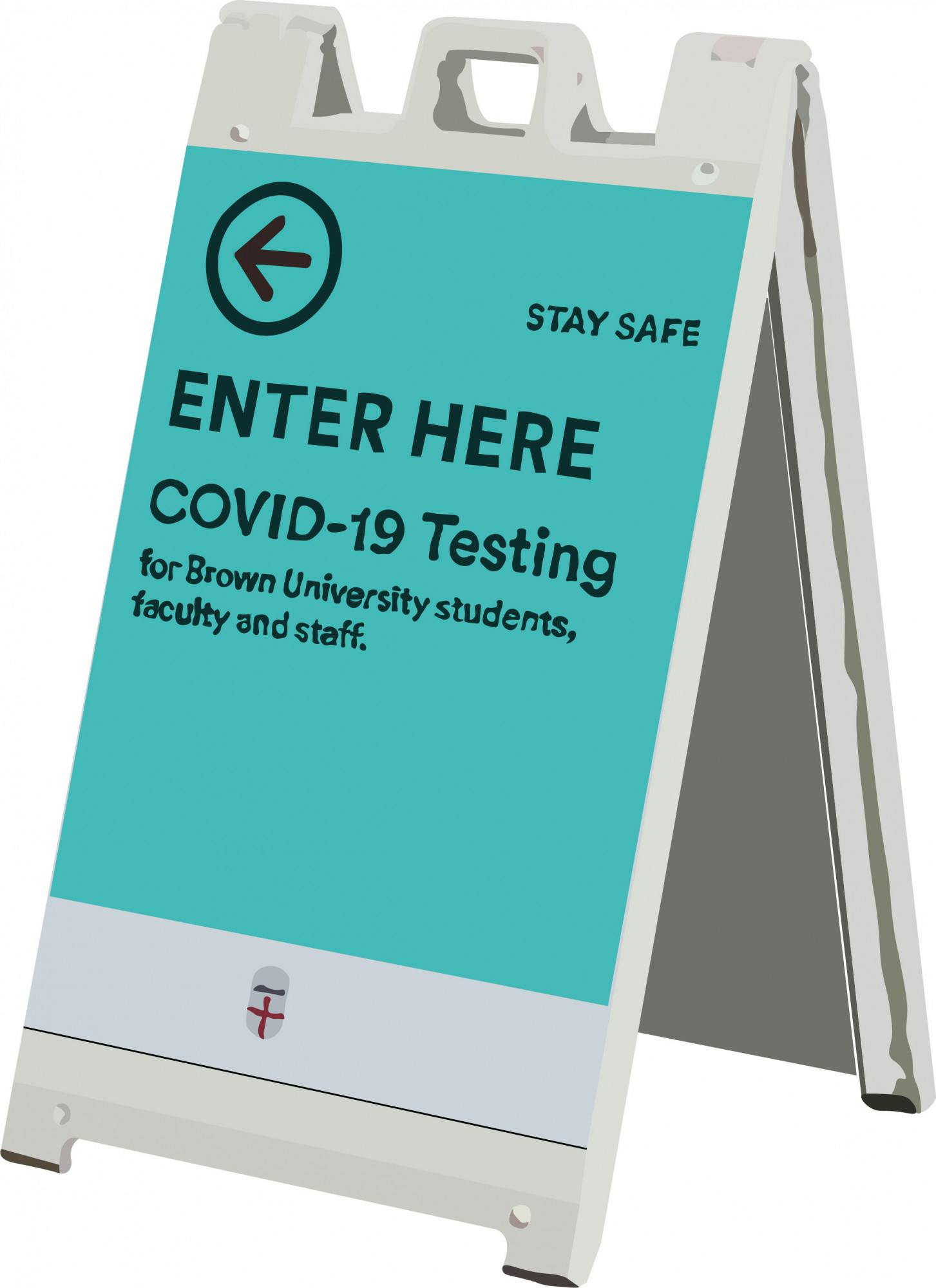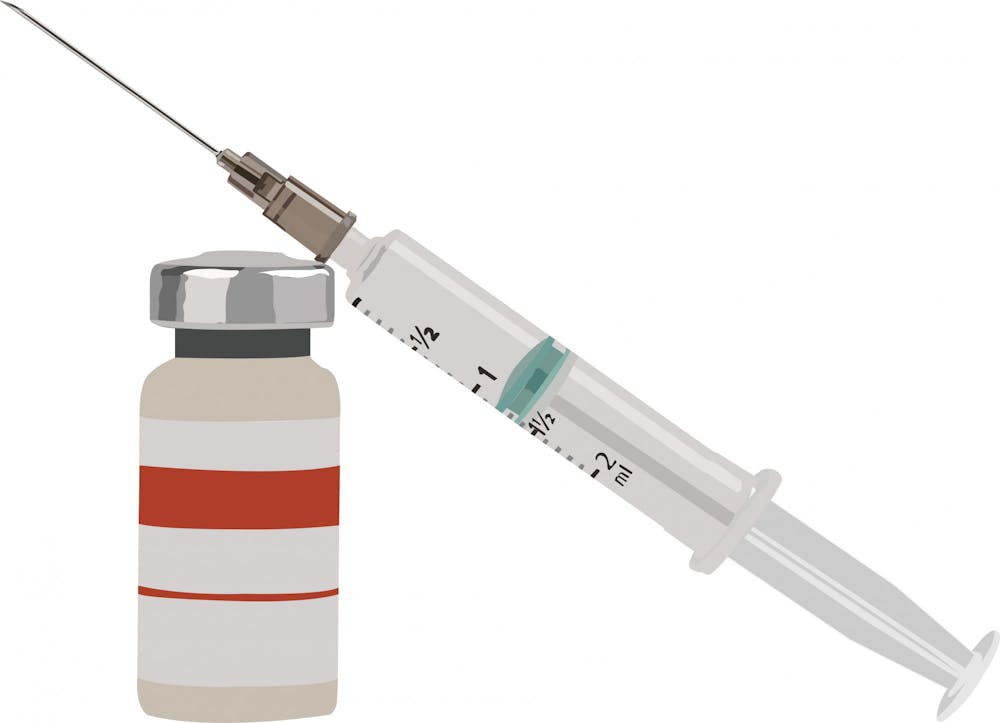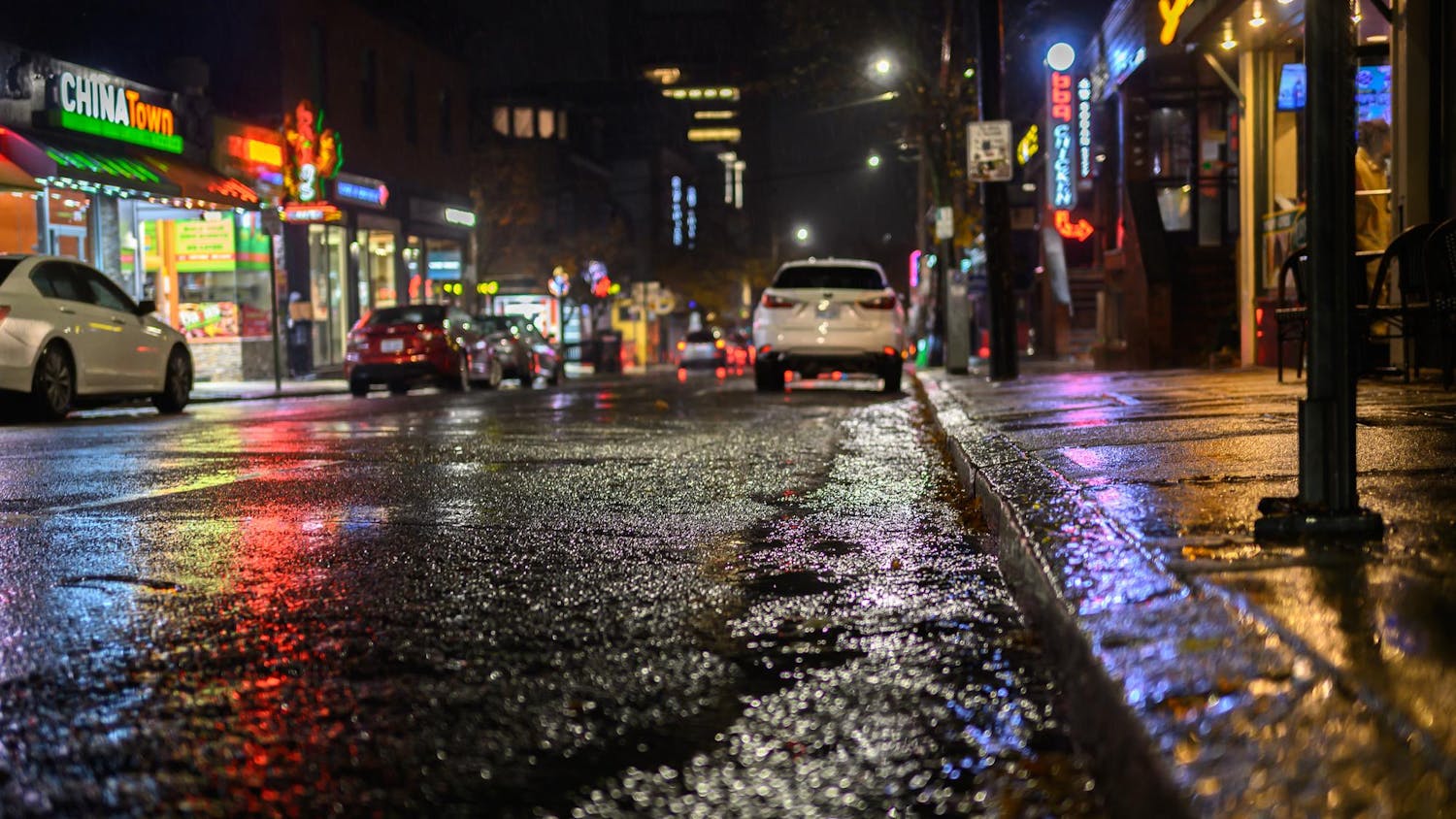Prospective students packed the Main Green April 13, participating in University-hosted activities during one of the warmest days in Providence this semester. The program — A Day On College Hill — is a typically annual event for admitted students to get a taste of the undergraduate experience before deciding whether or not to attend the University.
Yet the class of 2026 is the first cohort since the class of 2023 to gather on campus for the event because of public health restrictions put in place during the COVID-19 pandemic. ADOCH’s return to campus marks two years of the University operating through the pandemic. The Herald spoke with administrators including President Christina Paxson P’19 and Executive Vice President for Planning and Policy Russell Carey ’91 MA’06 about COVID-19 policy decisions and reflections from the past two years.
YEAR 1 (2020-2021)
ADOCH is canceled
On March 6, 2020, the class of 2024 received an email from Dean of Admissions Logan Powell announcing the cancellation of ADOCH and other on-campus admitted student events “due to growing concerns regarding the spread of COVID-19.” These were the first in a string of cancellations and closures that the University would announce over the next two years.
The Core Crisis Team, headed by Carey, decided on the cancellation, The Herald previously reported. According to Carey, conversations about canceling ADOCH started at the same time as concerns regarding study abroad programs and athletic events.
“There was particular concern about travel being a risk and also travel being shut down,” Carey told The Herald.
“The first half of March moved pretty fast, from a focus on students in Europe — in particular Italy, one of the first European countries where we had a lot of students to go into lockdown — to, in two weeks, telling people to pack up and go home,” Carey said. “It was a pretty rapid and dynamic time period.”
Classes move online, student leave campus
Six days later, the University announced that all courses would be moved to online instruction following a two-week break due to the increased public health risk caused by COVID-19.
“We were hoping that we could get through the semester and exams be remote,” Paxson told The Herald. “And then, it just hit a point when we decided that we had to do this.”
The decision followed Rhode Island declaring a state of emergency as well as the decision to move online by the rest of the Ivy League.
“Harvard and other universities announced that they were going online, so I started getting emails from students saying, ‘We know you are going to make this decision,’” Paxson said.
“There was a lot of concern about losing control, that the spread would happen fast and hospitals would get overwhelmed,” Carey said.
With approximately 4,600 students in residence halls, “the risk of overwhelmed hospital systems was a pretty clear indicator that sending people home was the right thing to do,” Carey added.

First COVID-19 case at Brown
On March 14, 2020, the novel coronavirus reached College Hill. A member of the Brown community tested positive for COVID-19, marking the first case on campus.
“When we first started, it was terrifying — we didn't know who might get really sick,” said Adam Pallant, clinical director of health services. “There was a point where we could do a total of six tests a day, and that was what we were limited to because that's all the state had. So early on, we had to do a lot of guesswork.”
Those who were suspected to have been in contact with the affected individual were told to self-quarantine, The Herald previously reported.
“If you were exposed to somebody who had COVID for more than 15 minutes in less than six feet, you were thrown into quarantine for 14 days,” Pallant said. “It was hard because it got a lot of people really mad at us as healthcare providers.”
Summer Pilot Program
In a June 17, 2020 Today@Brown announcement, the University introduced the summer pilot program as a transition into routine testing for the 2020-21 academic year. According to the announcement, the University worked with Verily, a life sciences and healthcare company, to offer routine testing for essential graduate students, faculty and staff who remained on campus.
In the announcement, Provost Richard Locke P’18 and then-Executive Vice President for Finance and Administration Barbara Chernow ’79 wrote that they were “committed to using the findings of this testing pilot to refine approaches, as needed, for the coming year.”
According to Carey, the Healthy Fall 2020 Task Force, chaired by Vice President of Campus Life Eric Estes and Professor of Economics and International and Public Affairs Emily Oster, focused on planning for safe residential and academic activity in the fall. “It was pretty clear that testing was going to be a key part of that,” Carey said.
“The summer really gave us an opportunity with a smaller population,” he added. “Mainly, the employees and students who never left and a slowly increasing population of faculty, staff and students involved in research.”

Three-semester plan announced
In a community-wide email sent July 6, 2020, Paxson announced the three-semester model that offered on-campus instruction in the fall, spring and summer of the 2020-21 academic year, with each student taking classes for two semesters.
“The decision to do the three-semester model was a hard decision and it put a lot of burden on faculty and staff to cut people's downtime,” Paxson said. “People were pretty tired because they couldn't get their summer break.”
Students return to campus
The University initially announced that students would be returning to campus on Sept. 9, 2020, a decision that was reversed Aug. 11.
A month later, on Sept. 10, Paxson announced that Brown would be welcoming students back to campus between Sept. 18 and 20 for the first time since the school’s closure in March. The decision came as a result of improvements in Rhode Island’s public health situation, low positivity rates from Brown’s testing program and low demand for quarantine rooms, The Herald previously reported.
Paxson said that “the decision to come back in person in 2020 was much harder because we were doing everything for the first time.”
“We knew that we couldn't have students sharing rooms, especially if they were taking a lot of courses remotely and for public health reasons,” Paxson said. “We had to figure out how to get hotel rooms, which we did.”
YEAR 2 (2021-2022)
Vaccine Mandate
In an email sent to the Brown community April 6, 2021, Paxson announced a mandate that required all undergraduate, graduate and medical students on campus or participating in in-person instruction to receive a COVID-19 vaccine for the fall 2021 semester.
“There was never really any question in my mind that we would require the vaccine,” Paxson said. “The only issue for students was how soon they could get them, so we realized that we had to make the vaccine mandate for the fall semester.”
Carey explained that the “underlying rationale” of the mandate was “the effectiveness of the vaccine at preventing severe illness and hospitalization.”
“We felt that that outweighed any downside to making it mandatory, and I think our community responded to that really well,” Carey said. “We have very high compliance rates and very little criticism from within the Brown community.”
Paxson explained that “the more controversial issue” was a vaccine mandate for employees, as the University had not previously required them to receive other vaccines.
“We had a lot of discussions with staff and with faculty, and I think there was very little pushback to the vaccine,” Paxson said. “In fact, the response I got from most people was, ‘this is great, this is going to make me feel safe coming back.’”
Masking and testing made optional
In a June 23, 2021 email to the Brown community, Carey announced changes to asymptomatic COVID-19 testing and mask-wearing policies.
The email stated that fully-vaccinated community members would no longer be required to get tested routinely or wear masks indoors after the University reached a 90% vaccination rate.
“By the middle of the summer, the number of new cases was so low,” Paxson said. “There were days with no cases at all, so we concluded it was safe to lift the mask mandate.”
The Brown community reached a 90% COVID-19 vaccination threshold on July 7, 2021, The Herald previously reported.
Shortly after, the University reopened indoor dining on July 12, 2021, The Herald previously reported.

Masking and testing returns
Facing a national rise in COVID-19 cases, Carey sent out a July 27, 2021 email to the Brown community reinstating routine testing for all students. A week later on Aug. 3, Carey and Paxson announced that the University would reinstate the mask mandate.
“We were following the data,” Paxson said. “The Delta surge came, and we had to go back to this.”
Returning to campus
The first week of September 2021, undergraduate students moved back to College Hill for a fully in-person fall semester.
“This year, there was never a question about whether we would have students back on campus; that was a given,” Paxson said. “The question was: How do we manage it in a way that is responsive to changes in the virus, the science and our understanding of how to cope with a virus?”
Indoor dining returns
Amid an uptick of cases just three days into the fall 2021 semester, with the most students on campus since the start of the pandemic, the University halted indoor dining Sept. 13, 2021, The Herald previously reported.
On Sept. 22, Carey wrote in a community-wide email that the University would reopen indoor dining, marking the start of consistent indoor dining for the entire student body. The decision came as a result of a decline in the number and rate of positive asymptomatic COVID-19 cases and the increased waste of grab-and-go meal boxes, according to the email.
“As we had robust contingency plans in place that allowed us to pivot rather quickly as needed, there was not much difference when we moved between in-person and grab-and-go meal service with the exception of some infrastructure and signage adjustments,” George Barboza, vice president of dining programs, wrote in an email to The Herald.
“All decisions regarding what dining halls were open (or) closed throughout the pandemic were based on on-campus population numbers and how we could effectively serve the campus community in a safe and healthy environment while also keeping our staff safe and healthy,” Barboza added.
According to Barboza, dining services have “aligned closely with normal operations” in the 2021-22 academic year with few challenges. In contrast, challenges in the first year included “preparing and packaging thousands of meals per week and delivering and distributing them at various locations throughout the campus,” Barboza wrote.
Booster mandate
In an email to the Brown community on Dec. 14, 2021, Carey wrote that the University would require all students, faculty and staff to receive a COVID-19 booster shot.
Carey said that the process of making the decision to mandate the booster was “very similar” to the process of mandating the first two doses.
“The Omicron wave in November and December only accelerated” the process, Carey said. “There was very strong emerging evidence that the booster was going to be very helpful in responding to Omicron.”
“I have never heard of a University that has booster compliance as high as Brown,” Paxson said. “It's almost 99%.”
The switch to rapid antigen testing
In an email to the Brown community on Jan. 12, 2022, Carey and Estes wrote that the University was no longer performing PCR testing for vaccinated individuals and would be providing rapid antigen testing as an alternative.
Carey said the decision was “driven by medical advice, guidance and what was happening around us,” citing the transmissibility of the Omicron variant as seen in the outbreak at Cornell at the end of the fall semester.
“We were confronted with a variant that was much more transmissible,” Carey said, “and an antigen test is better at showing whether someone's infectious now.”
Masking and testing made optional, again
On March 10, 2022, Carey announced in an email to the Brown community that testing and masking for vaccinated students would be optional moving forward with noted exceptions. According to the email, the change came as a result of declining positive test results, moderate symptoms of positive cases and a high rate of vaccination on Brown’s campus.
Paxson said the decision involved balancing concerns about the Omicron variant and the effectiveness of the vaccine and booster.
“As cases have come down with Omicron and we're seeing no evidence of serious illness, we decided that we could do without the masks,” Paxson said. “We were always weighing risks and benefits.”
Reflections
Two years after the University was abruptly shut down, Paxson said that the University has “learned a tremendous amount” regarding “how to manage” the pandemic.
“I'm proud of this community. I'm proud of the way the faculty came back to teach. I’m proud of my team for putting together all the health protocols and the students for coming back and hanging in there through difficult times,” Paxson said. “At Brown, we live by our values, and I think the values of collaboration and compassion have really shone through throughout this pandemic.”





